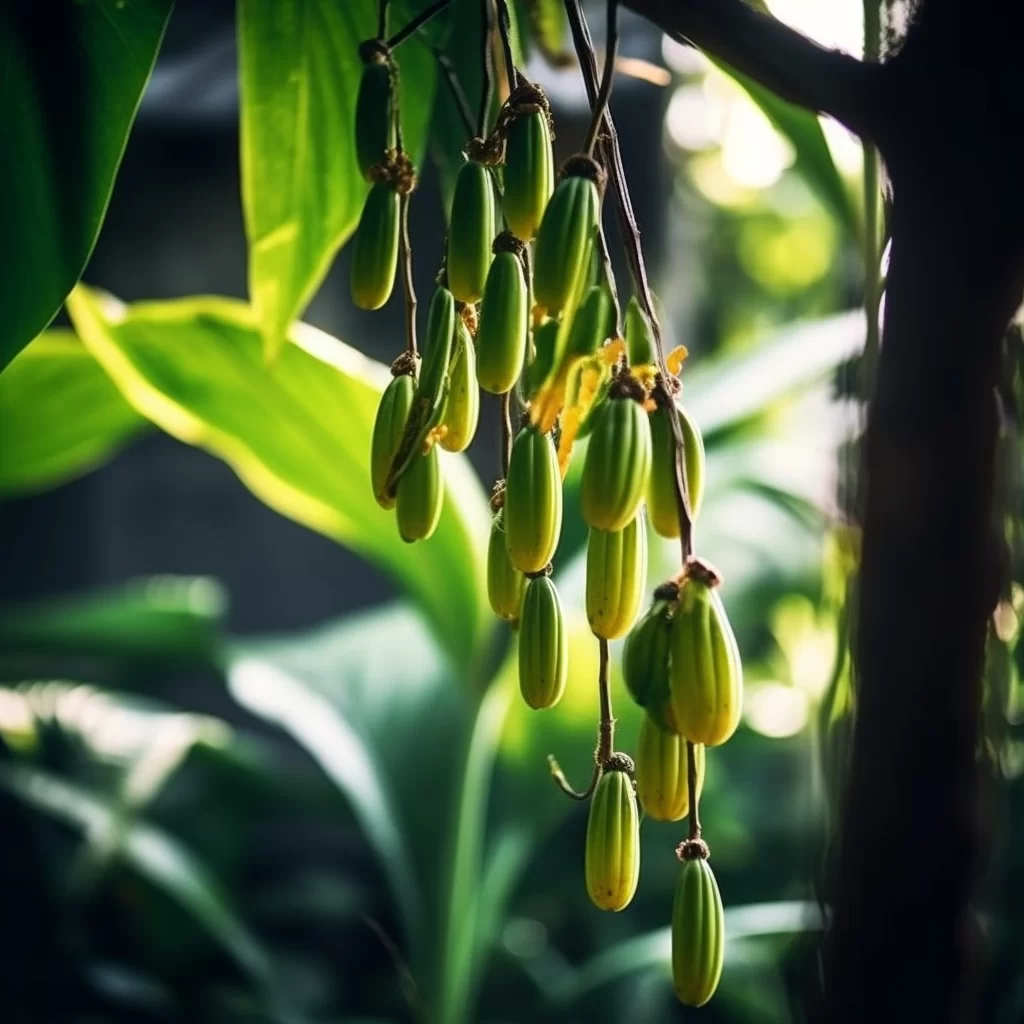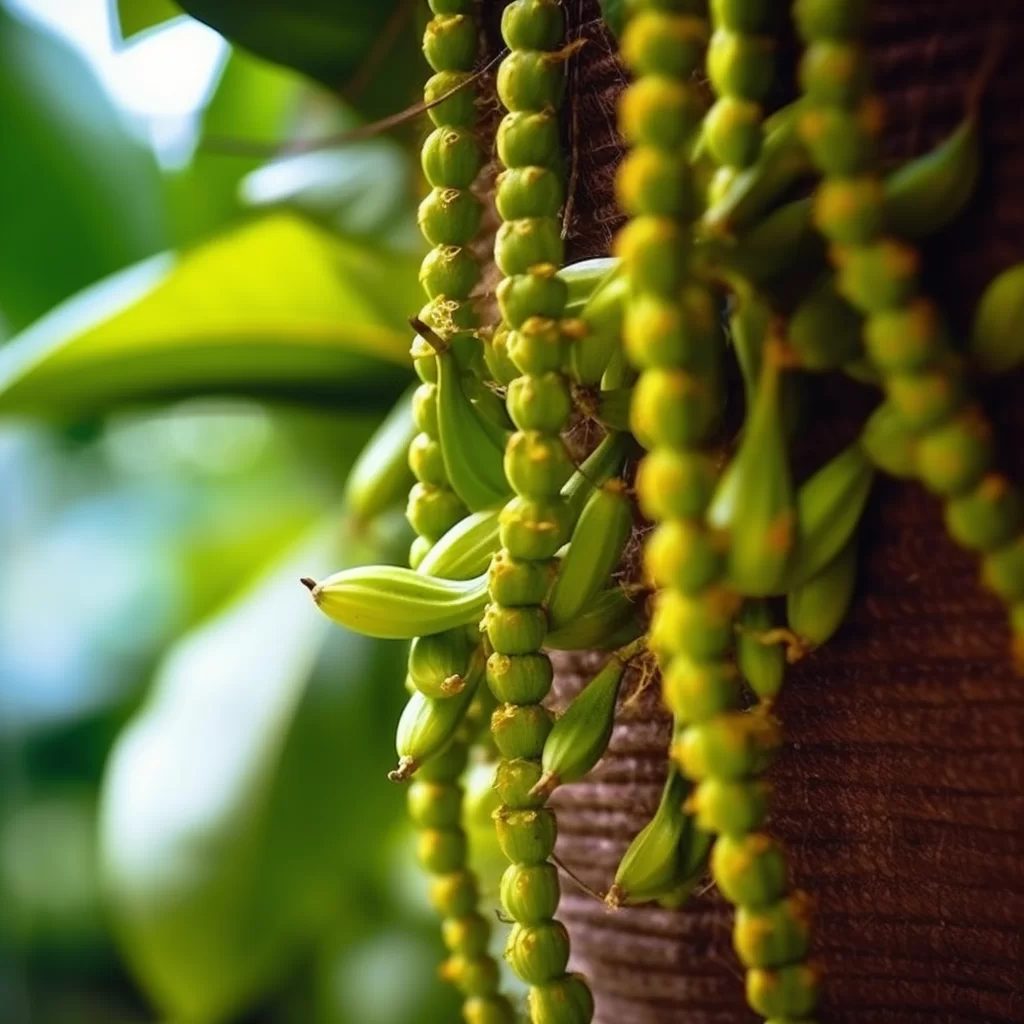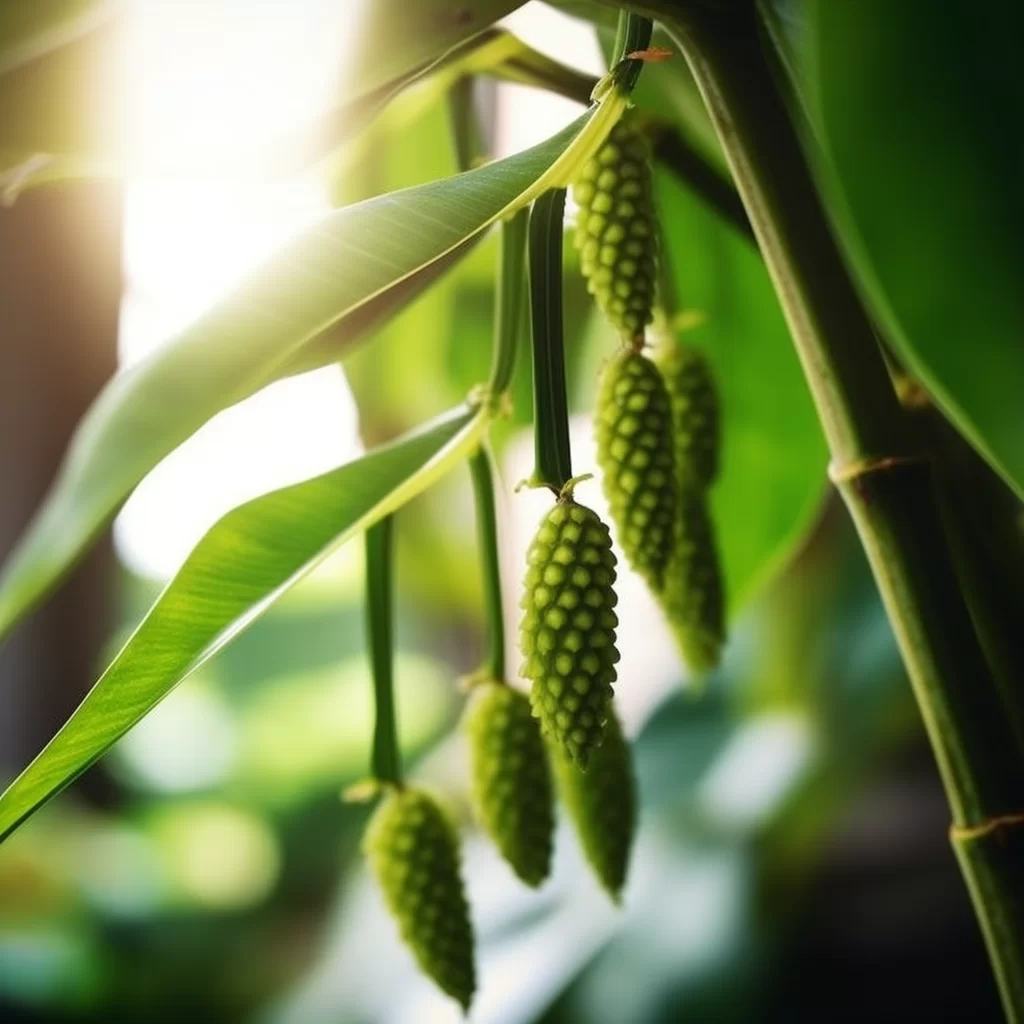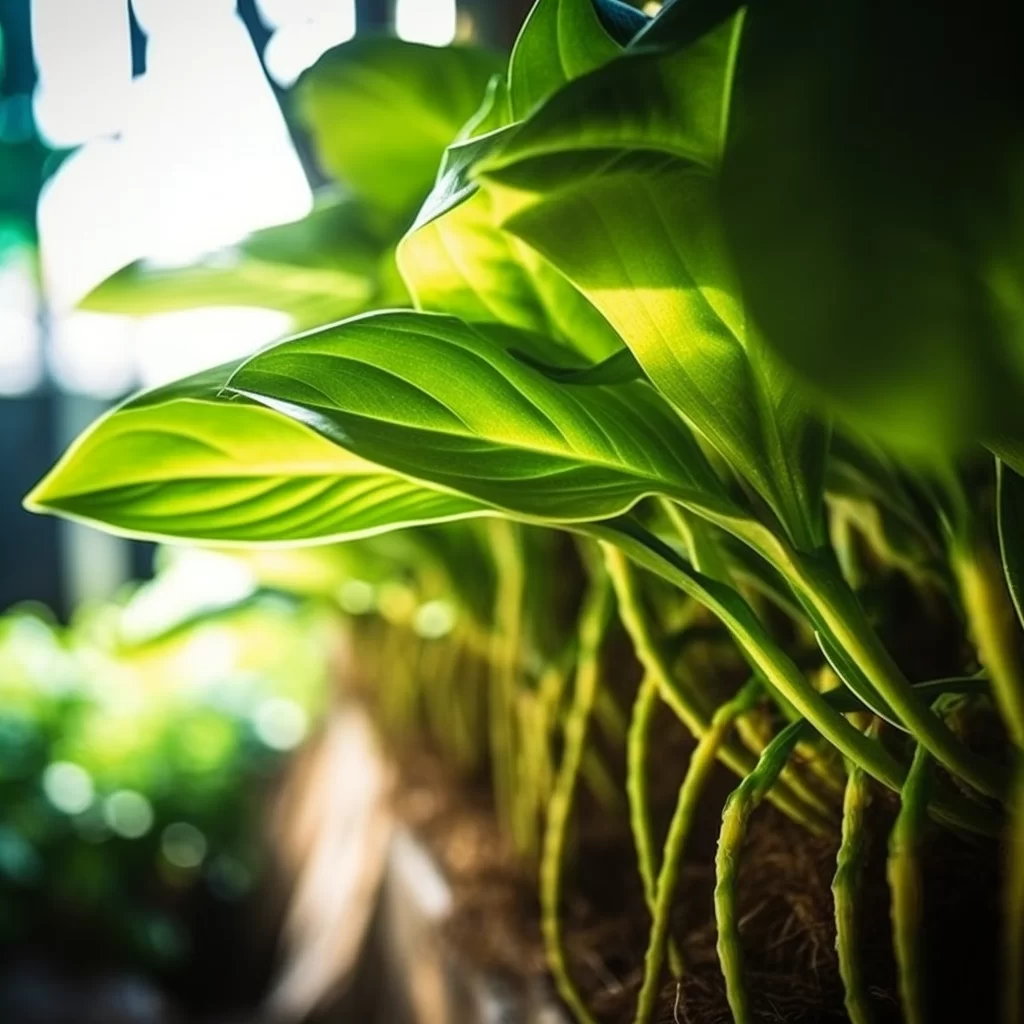Story of Day :
Contents
String of Bananas Plant: Complete Guide and Care Tips
If you want to add a one-of-a-kind plant to your indoor garden, you might want to check out the String of Bananas.
This peculiar succulent is quite popular for its graceful and cascading stems that look like clusters of bananas.
It’s certainly a unique feature that will add character and charm to any room in your home.To keep this fascinating plant healthy, it’s essential to know how to take care of it properly.
Like most succulents, the String of Bananas thrives in well-draining soil and bright but indirect sunlight.
You should also make sure not to overwater it as too much moisture can cause root rotting.
Overall, this plant is a low-maintenance beauty that will bring joy and interest into your life!
Plant Basics
- The scientific name for the String of Bananas plant is Senecio Radicans.
- This succulent is native to South Africa and belongs to the Asteraceae family.
- The leaves are green with a hint of blue-grey and grow in clusters along the stem.
- As it grows, it can reach up to three feet in length!

Care Tips
The String of Bananas is a resilient plant that can flourish under specific circumstances.
If you want to grow the perfect String of Bananas, there are a few things you should keep in mind.
Firstly, this plant needs to be planted in well-draining soil and placed in a spot with bright but indirect sunlight.
Direct sunlight can easily scorch the leaves, so it’s best to keep an eye on its placement throughout the day.Secondly, it’s crucial not to overwater your String of Bananas as they’re prone to root rot if left soaking wet for too long.
Watering once every two weeks is enough, but make sure that the top layer of soil has dried out before doing so.
Overall, these easy-to-follow tips will help ensure that your String of Bananas stays healthy and happy for years to come!
Lighting:

- This plant loves bright but indirect light.
Place it near an east or west-facing window.
Avoid direct sunlight as this can scorch its leaves .
Watering is an essential task for any gardener or plant owner.
It involves providing the right amount of water to your plants to ensure their growth and health.
The frequency of watering depends on various factors such as the type of plant, soil moisture, weather conditions, and size of the container or garden bed.
Over-watering can lead to root rot and other fungal diseases while under-watering causes dehydration and stunted growth.
The best time to water is in the early morning or late afternoon when temperatures are cooler, which helps prevent evaporation and allows for maximum absorption by the roots.
By monitoring your plants’ moisture levels regularly and adjusting your watering schedule accordingly, you can help them thrive.In addition to timing, proper technique also plays a crucial role in effective watering.
Directly pouring water onto leaves can cause burning from sunlight magnification while inadequate drainage leads to standing water that suffocates roots over time; therefore using a watering can or hose at soil level is ideal for most plants.
For container gardens specifically it’s important not only that they have drainage holes but some kind of saucer so excess water does not damage surfaces below them like patios or balconies.You may also want to consider using rainwater as it lacks chlorine chemicals found in tapwater that can harm microorganisms essential for healthy soil.However you choose do it,the art (and science!)of watering is key in keeping your greenery thriving!
- Succulents have specific watering preferences – they don’t like their roots sitting in water so be careful not overwater them ..
- In general water when soil has fully dried out once every two weeks or even more slowly if situated on a shaded area.
TIP: It’s better not to water the String Of Banana until after checking if there’s any moisture left on soil surface.
 Fertilizer is a substance applied to soil or plants to promote their growth and increase yields.
Fertilizer is a substance applied to soil or plants to promote their growth and increase yields.It’s commonly used in agriculture and gardening but can also be used in commercial settings, such as golf courses and public parks.
There are many types of fertilizers available, including organic and synthetic varieties.
Organic fertilizers are made from natural materials like animal manure, while synthetic fertilizers are made from chemicals that mimic the nutrients found in natural sources.Fertilizers work by providing essential nutrients like nitrogen, phosphorus, and potassium (NPK) to plants.
These nutrients help plants grow stronger roots, healthier leaves, and more abundant flowers or fruit.
However, excessive use of fertilizer can lead to environmental problems like water pollution or soil depletion over time.
Therefore it’s important for gardeners and farmers alike to apply fertilizer responsibly according to the specific needs of their crops or plants while keeping in mind the long-term impact on the environment.
Succulents don’t need to be fertilized often.
Feed it once a month with a cactus fertilizer in the growing season (spring and summer).
Soil:

To keep your String of Bananas thriving, it’s important to provide it with well-draining soil.
This type of soil will help prevent water from accumulating around the roots, which could cause root rot and ultimately kill the plant.
Fortunately, there are special succulent potting mixtures that are perfect for this plant.
These mixtures are designed to allow excess water to quickly drain away while still providing adequate moisture for the roots to absorb.
By using a suitable succulent potting mixture, you can give your String of Bananas the best chance at a long and healthy life.If you’re not sure where to find a suitable succulent potting mixture for your String of Bananas, don’t worry! Many local garden centers and online retailers offer specialized soils for all types of plants, including succulents.
When selecting a potting mixture, be sure to look for one that is labeled specifically for succulents or cacti as these plants have unique needs when it comes to soil and watering requirements.
With just a little bit of research and some careful attention paid to its soil conditions, your String of Bananas can continue growing strong and lush year after year!
Propagation refers to the process of multiplying plants by various methods such as seeds, cuttings, grafting, or layering.
It is an essential aspect of gardening and agriculture that enables the production of a large number of plants with desirable traits.
The propagation method chosen depends on the type of plant and its growth habits.
For instance, seed propagation is suitable for annuals and biennials while cuttings work well for many perennials.
Grafting can be used to combine two different plants into a single one with desirable characteristics while layering involves rooting a branch before separating it from the parent plant.Propagation also allows gardeners to preserve rare or endangered species and maintain genetic diversity in their gardens or farms.
Additionally, it helps in creating new varieties that are better adapted to local conditions such as soil type, climate or pests.
Furthermore, propagating plants provides an opportunity for individuals to share their knowledge and expertise with others through community events such as plant swaps where people exchange different types of propagated plants.Overall propagation plays a crucial role in horticulture since it allows gardeners and farmers alike to increase their yields while using less resources than would be necessary if they had purchased new seeds each year rather than utilizing existing ones through these methods instead which could lead towards producing sustainable agricultural practices over time with care since planting more means less reliance on buying more seeds each year which could lead towards achieving sustainable agricultural practices over time if used responsibly.
If you’re looking to add some greenery to your space without breaking the bank, consider propagating a String of Bananas plant.
This succulent is not only visually stunning, but it’s also incredibly easy to propagate.
All you need is a stem cutting and some patience.
With proper care and attention, you’ll soon have multiple plants that can be used to decorate your home or office.The process of propagating the String of Bananas plant is fairly straightforward.
Simply take a stem cutting from an existing plant and place it in soil or water until roots start to grow.
Once the roots have established themselves, you can transplant the new plant into its own pot.
It’s important to give your new plants plenty of light and water while they are establishing themselves so they can thrive in their new environment.
With these simple steps, anyone can successfully propagate this beautiful succulent with ease!
If you want to propagate your succulent plant, there’s a simple process that you can follow.
You’ll need to cut off a stem from the main plant and make sure there are at least two leaves left per cutting.
Once the stem has been cut, leave the cuttings aside for around five days until calluses have formed over the wound.
This is important because it helps to prevent rotting when they’re planted in soil.
After this time has passed, dip each cutting into rooting hormone powder and plant them in moist soil mixture designed for succulent plants.
Just remember to make sure that your pot has drainage holes before planting so that excess water can escape.Growing new plants from existing ones is an exciting process, particularly if you’re fond of your succulent collection! To begin propagating your succulents, take a stem cutting from one of your healthy plants and ensure that it has at least two leaves left behind on the mother plant after being removed.
Before planting the cutting, allow it to dry out for several days until calluses form over the wound as this can help prevent rotting later on when planted in soil.
Next up, dip each cutting into rooting hormone powder which will give them an extra boost during growth time then place them into well-draining soil mixture suitable for succulent plants with moisture content kept constant till roots develop enough before watering as normal again – don’t forget those essential drainage holes!Pests and problems are two common issues that homeowners face.
Pests can come in various forms, including insects, rodents, and birds.
These unwanted guests can cause damage to property, spread diseases, and create a general sense of discomfort.
It’s important to take preventative measures such as sealing cracks in the home or using natural remedies like peppermint oil to keep pests at bay.On the other hand, problems can arise from things like plumbing issues or electrical malfunctions.
These unexpected situations can be costly and time-consuming to fix but it’s crucial not to ignore them as they may worsen over time if left unattended.
Regular maintenance checks are recommended to catch any potential problems early on before they become a major headache for homeowners.
Overall, being aware of these common pests and problems is key in maintaining a safe and healthy home environment for oneself and loved ones alike.
If you are an avid plant lover, it is essential to know the most common issues that can occur with your String of Bananas plants.
These plants, native to South Africa, have become increasingly popular due to their unique cascading vines and low maintenance requirements.
However, there are a few problems that you might encounter while growing them.
The first issue could be root rot caused by overwatering or poorly draining soil.
This will lead to yellow leaves and soft stems.
Another problem could be spider mites infestation on the leaves which can cause browning and curling of the foliage.To ensure your plant’s health and longevity, it is crucial to identify these issues early on and take proper measures such as cutting back on watering frequency or using insecticides for spider mites control.Trimming off affected areas can also help in preventing spreading of any disease throughout the plant.
Overall if taken care of properly, String of Bananas plants will bring beauty and fresh vibes in your home decor.In summary, String of Bananas plants may seem like easy-going houseplants but require some attention when it comes to potential issues they might face.
Root rot from overwatering or poor drainage soil along with spider mites infestation are two common enemies this plant tends to encounter often but can easily be dealt with timely detection through trimming off affected areas or using insecticides if necessary so that these beautiful green vines thrive for years within our homes!
- Overwatering can lead to root rot or fungal infections, especially during cooler months when soil takes longer to dry out completely ..
- Succulents are susceptible to mealybugs, spider mites or other pests that feed on their sap.
TIP: Wipe away any pests using rubbing alcohol-dipped cotton balls but if infestation persists consider spraying approved pesticides which specifically target these bugs without harming your plants -always read instructions carefully before use.
.
In Conclusion
If you’re searching for an exciting and distinctive way to spruce up your indoor garden, then give the String of Bananas plant a try.
This plant is sure to illuminate any room with its enchanting cascading stems, which will undoubtedly give a distinct touch to your home décor that no other plant can provide.
However, growing the String of Bananas may require some care and attention on your part not to damage its delicate structure.This fascinating succulent is incredibly resilient and requires little water or maintenance, making it an ideal choice for anyone looking for a low-maintenance houseplant that adds some greenery to their home.
Additionally, the cascading stems of this lovely plant make it an excellent decorative addition to any space in need of some life.
So go ahead: add this delightful succulent into your indoor garden collection today!